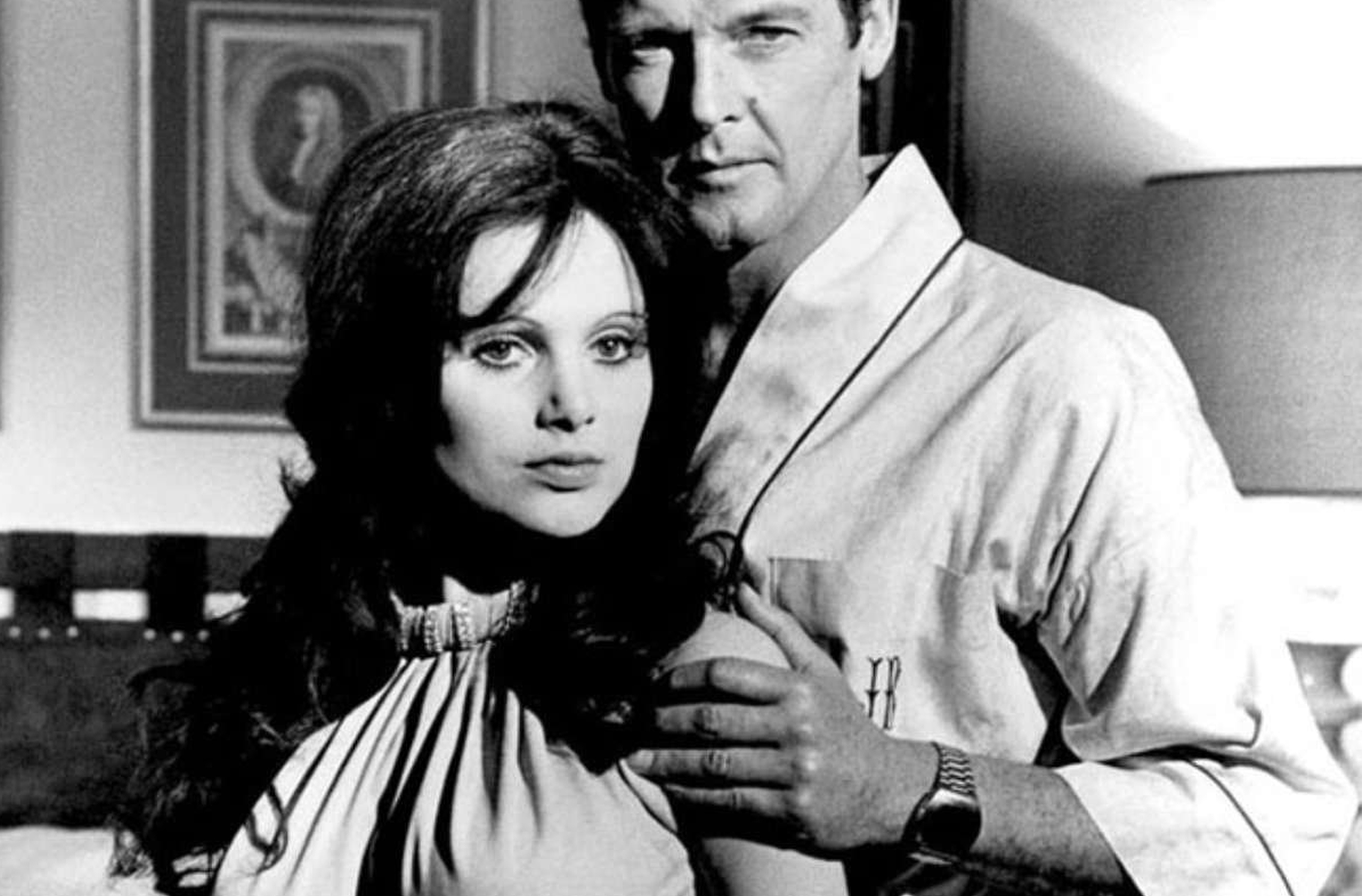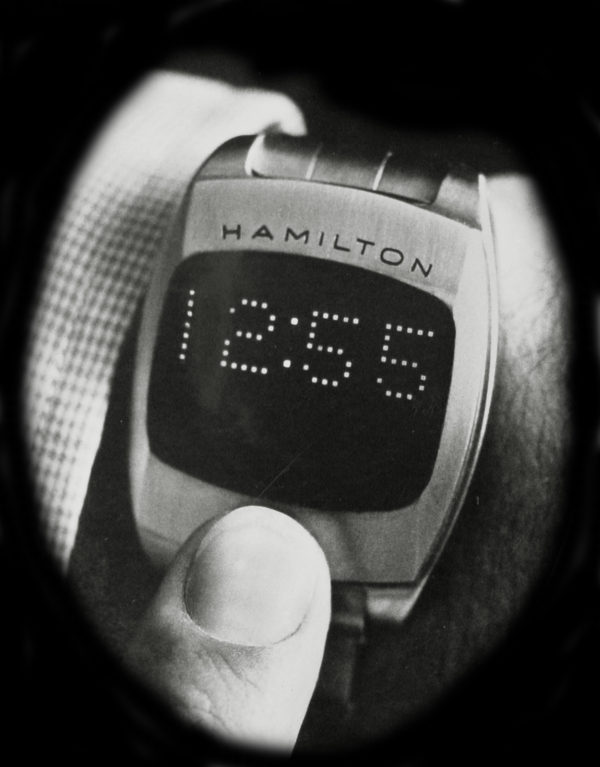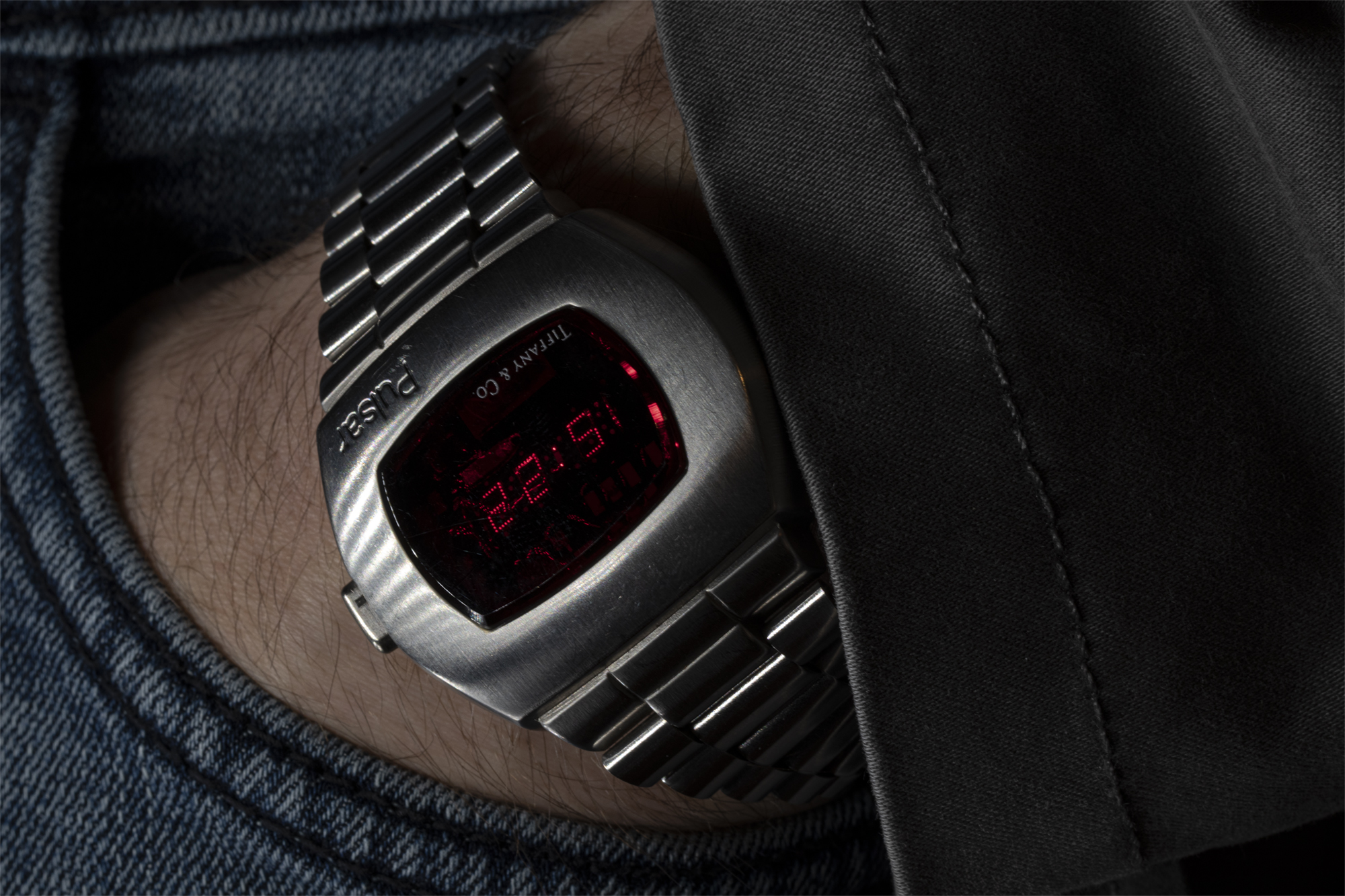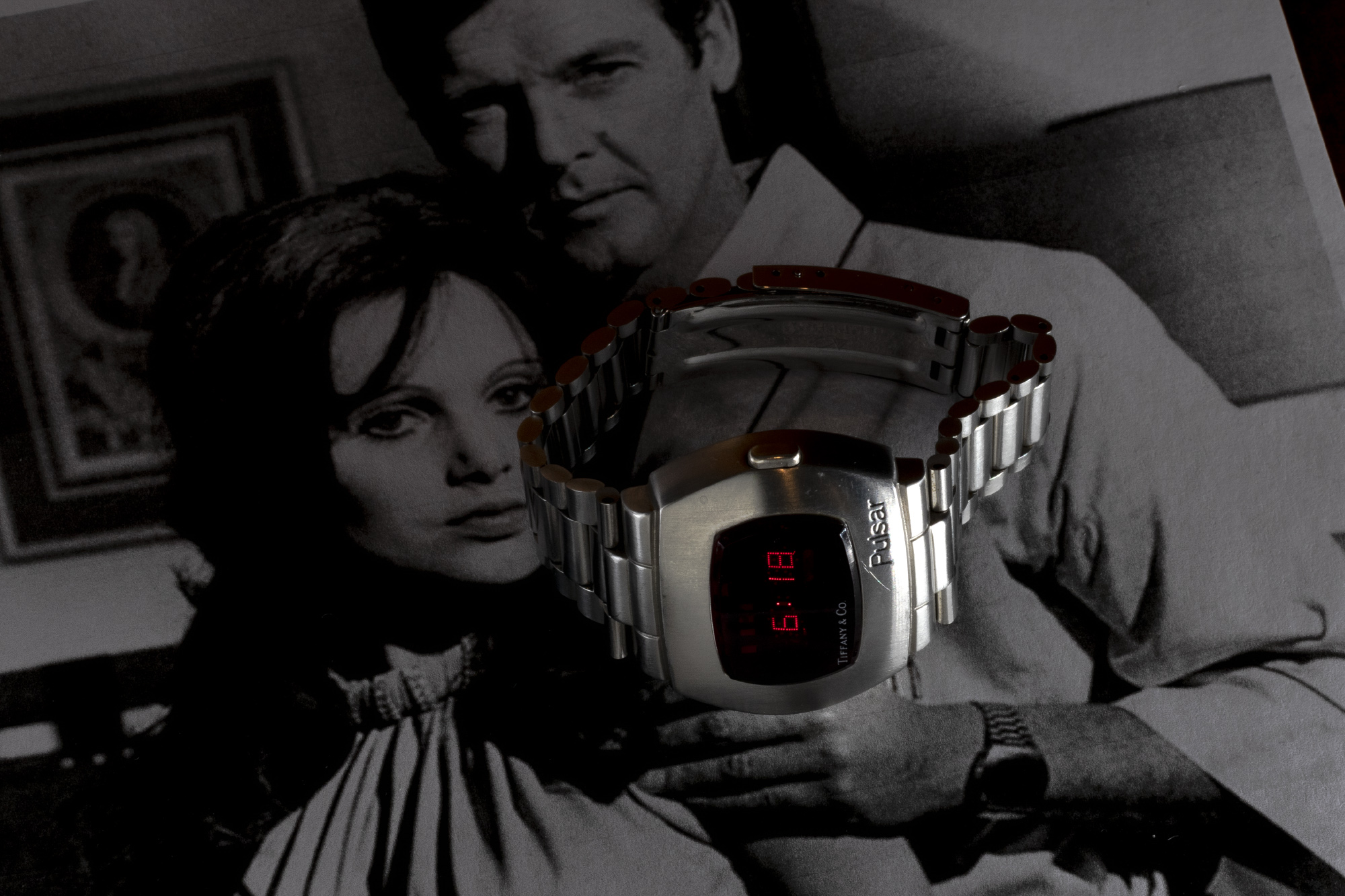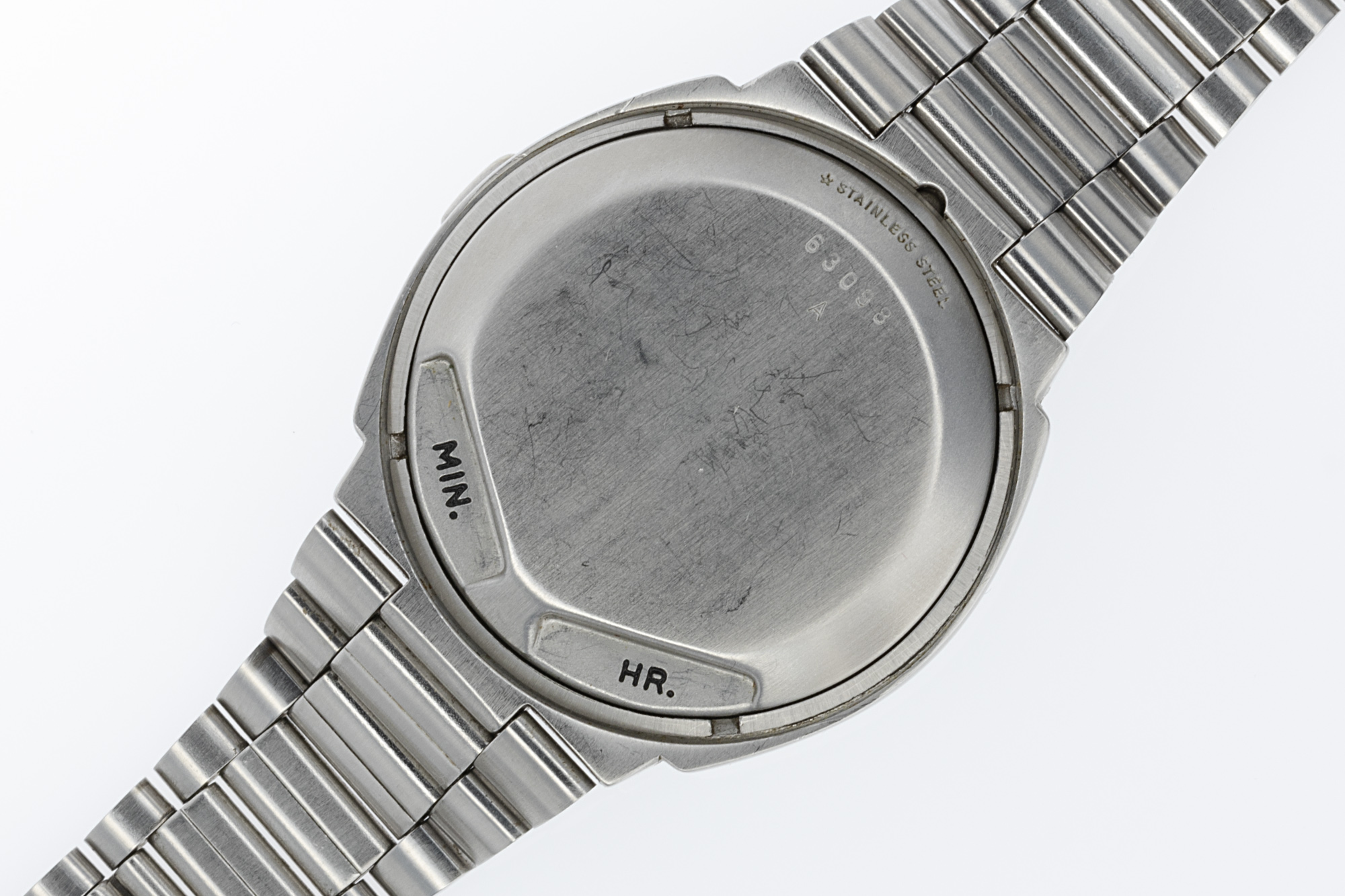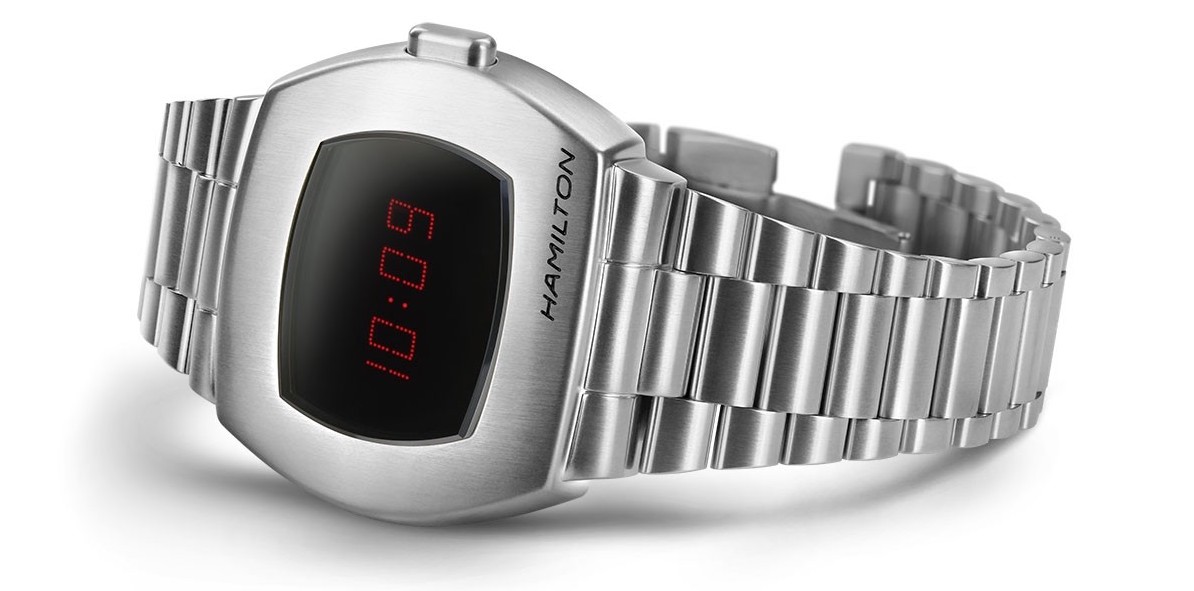FOCUS ON. Hamilton presents the heir of the historic Pulsar P2 fifty years after its unveiling
the world’s first electronic digital watch returns in a riedition
▣ MAY 20, 2020 by ENRICO AURILI
Share:
Fifty years after the unveiling of the first digital wristwatch, Hamilton decided to release this year a watch that retrace the lines of the iconic Pulsar: the watch that at its launch revolutionized the way to read the time.
Preceded by the exclusive P1 gold version released in 1972, the P2 – to which the new Hamilton model is inspired – was a resounding success for the American company, so much that it opened during the following years the revolution of digital watches.
Roger Moore and Jane Seymour in the movie Live and Let Die
The Pulsar is one of those watches worn by the secret agent that has entered the collective imagination. Perhaps not on par with the Rolex Submariners used by 007, but even if until then Bond watches were not yet multipurpose gadgets modified by Q, thanks to the revolutionary appearance and its different way of indicating the time, the Pulsar P2 used by Roger Moore in Live and Let Die (1973) left everyone fascinated.
Not surprisingly for Hamilton, and the affiliated Time Computer, Pulsar’s sales proved to be a record high.
To trace the history of the Pulsar it’s necessary to pass through the demonstration of the functioning of diodes, also known as LED (Light Emitting Diode), performed for the first time by Nick Holonyak Jr. in October 1962 with the emission of a red light source, whose wavelengths fell within the spectrum visible to the human eye.
Seven years later the Electro/Data Inc., in collaboration with engineers George Thiess and Willy Crabtree, took an interested in the creation of a table clock prototype whose time indication was showed by diodes produced by Hewlett Packard. As soon as the news spread, Hamilton engineer John M. Bergey contacted the company.
Hamilton already had patents and prototypes for wristwatches whose time were digitally indicated. In addition, director Stanley Kubrick and author Arthur Clarke had turned to Hamilton in 1967 for the concept of a futuristic watch to use for the movie 2001: A Space Odyssey.
Although the exemplar never appeared in the movie, the manufacturer made for them a clock with a flattened spherical shape whose digital time was indicated by nixie tubes. On the contrary, were chosen a futuristic shaped wristwatches, but still characterized by an analogue indication while the digital one, reserved for GMT and date indications, was restricted to the lower part of the case.
Hamilton’s two prototypes for the movie 2001: A Space Odyssey
The agreement reached between Electro/Data and Hamilton stipulated that the former would provide electronic modules for the new watch, while Hamilton would in turn fund the research.
The project leaded by John M. Bergey was so named Pulsar, and the name was inspired by a scientific publication on stars that could emit radio waves at extremely regular intervals. Know as pulsars, these stars were discovered few years earlier by astrophysicist Jocelyn Bell.
“pulsating light emitting from a star with unprecedented accuracy”
(The scientific description of the pulsar)
On 6th May 1970 the US3672155 patent was filed, while a press conference was held at the Four Seasons in New York. That same day one of the six prototypes, made at a cost of 60,000 dollars each, was shown for the first time by Johnny Carson during The Tonight Show.
On this occasion the conductor didn’t fail to list the innovations of the watch, but also he comment ironically as “This machine will never leave Mickey without a work”. A true verdict only in part because just five years later, still in the middle of Pulsar fever, Carson would had introduced another innovation, the Pulsar Calculator. The last glory before the sunset of the Pulsar, surpassed by LCD technology and Japanese industrialization.
The Hamilton Pulsar prototype, published in the article The Pulsar: A Revolution in Display Technology by Klaus Zhang
The arrival of pulsar P1 and P2
Hamilton’s initial intention was to launch the model in the fall of 1970, but Electro/Data continued to experience problems with the 44-IC module that served to manage the watch’s functions. There were no more moving parts, and everything was managed by electronic and integrated circuits.
To overcome the flaws, the project was overturned. A new 25-IC module was developed in combination with two conventional batteries instead of the 4.5-volt rechargeable. At the same time, the sculptor Ernest Trova was commissioned to develop a new design for the case, a design later taken up by Jean M. Wuischpard. After some reliability issues, the first 400 models of the Pulsar called P1 were released on 4th April 1972 in an 18k gold version at price tag of 2,100 dollars. The watch immediately went on to steal with various VIPs, political figures, Shah and overseas emperors interested in buying their own exemplars.
After the remaining modules were delivered, the agreement between Electro/Data and Hamilton could be considered concluded and the Lancaster manufacturer opened a company called Time Computer Inc., whose purpose was to manage the production and marketing of the next Pulsar models, starting with the P2 launched in 1973 that proved to be a massive commercial triumph, with more than 10,000 units sold per month. So much that the production of 1,000 units each month could not keep up with orders.
“it is conceivable […] that some day in the future there will be a programmable wrist computer which would respond to a variety of useful programs personally selected by the wearer”
(Richard J. Blakinger, Hamilton president)
The success of the Pulsar in those years is perhaps comparable only to that obtained by Swatch between of the 80s and 90s.
Hamilton succeeded to developed something that appeared even more advanced and futuristic than the already revolutionary quartz mechanism. Also in the boom of the space was, with remembrance of the moon landing in 1969, the Pulsar seemed to be the perfect watch for that decade.
Unfortunately, this domain lasted only another four years, with LCD watches gradually starting to overtake LED watches and Seiko, after years of development in that direction, was there ready to inherit the success.
The Hamilton PSR
The new Hamilton PSR watch pays homage to its predecessor by retracing its lines, with the main differences in the display and the name. In the first case, the new watch is equipped with a hybrid screen, developed by Asulab, which combines reflective LCD technologies (liquid crystal displays) and OLED (organic light-emitting diode). The latter one is activated by pressing the button which display the time in a similar way to the original Pulsar, while the LCD allows the time to be always visible. About the name, the Pulsar brand was acquired by Seiko in the late 1970s, which is why appear the name Hamilton instead of the “Pulsar” signature on the case.
The new PSR is produced in a steel version (ref. H52414130, 695 EUR) and one with gold PVD coating (ref. H52424130, a limited edition of 1,970 units at a price of 945 EUR). Originally, the P2 was available in five variants: steel, gold-plated, gold-plated/steel, 14K gold and 18K gold, with a price tag ranging from 275 dollars for the steel version up to 2,100 dollars for the 18K gold version.
The new Hamilton PSR in the steel version
Altri/ARTICOLI

